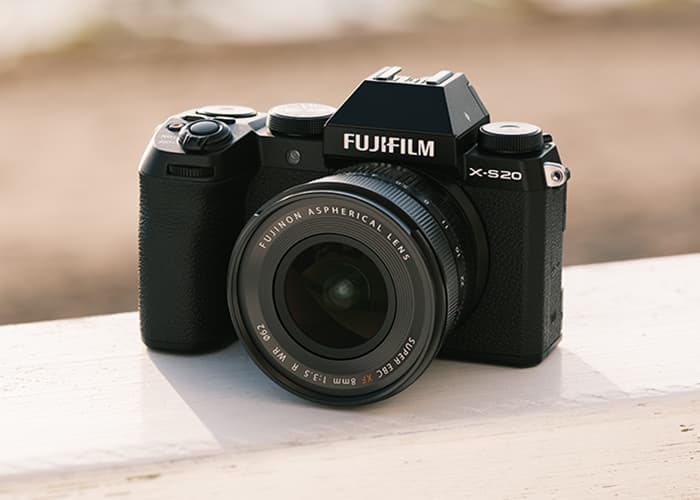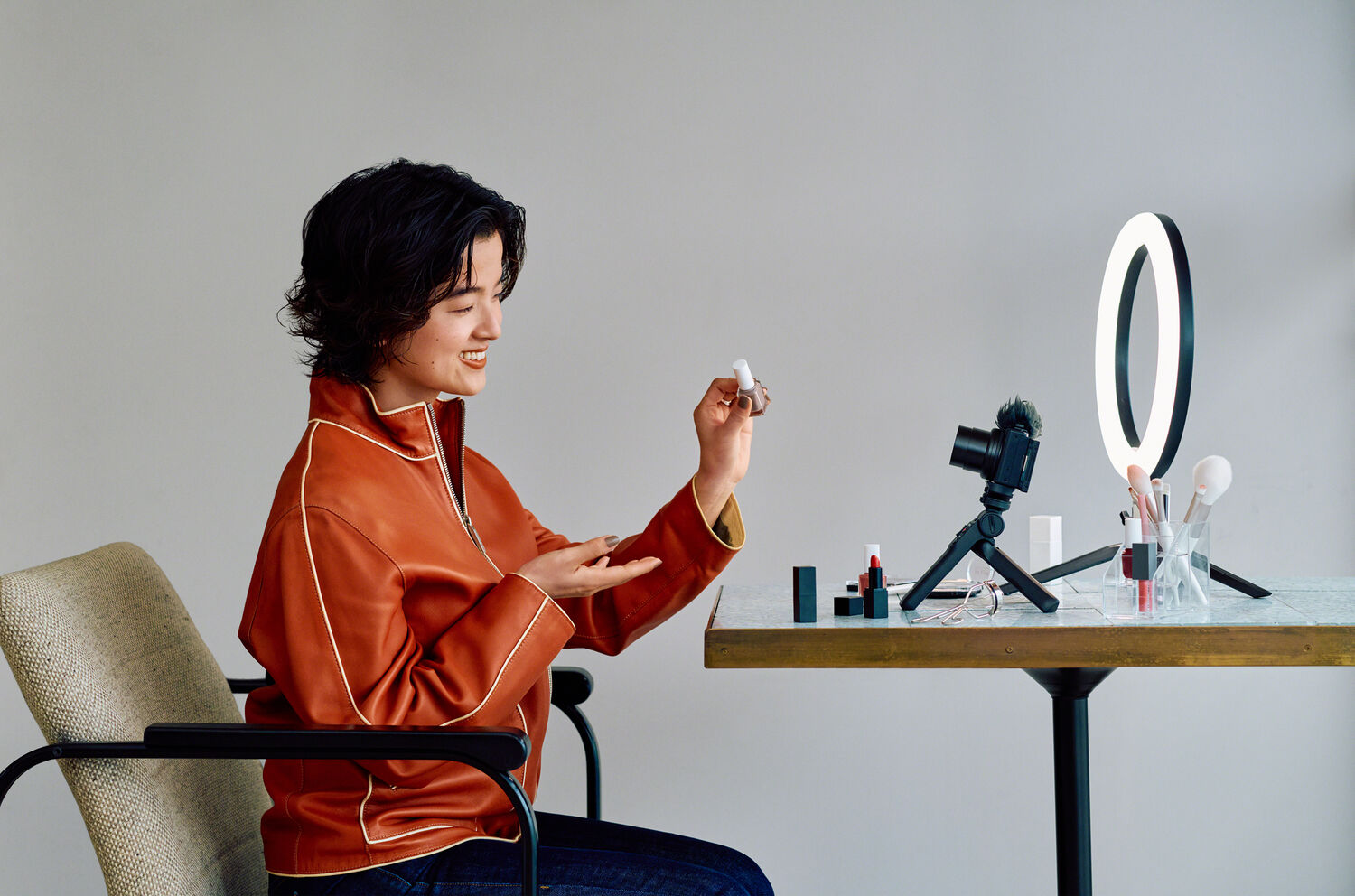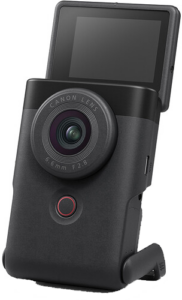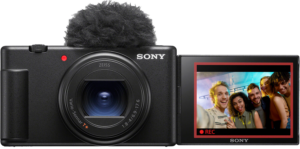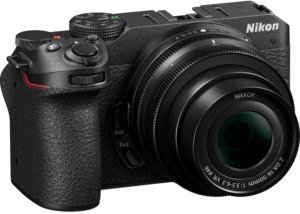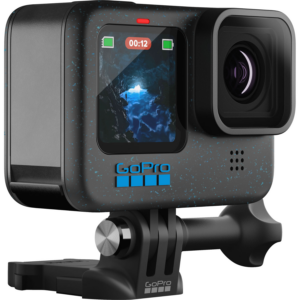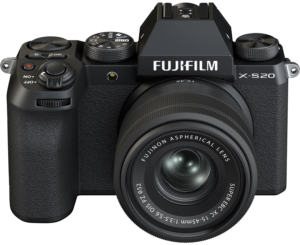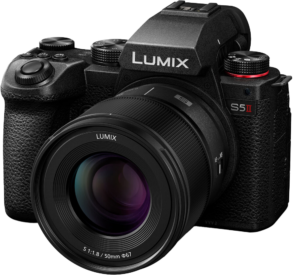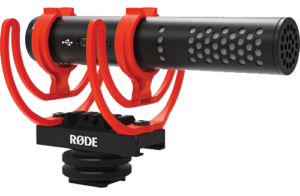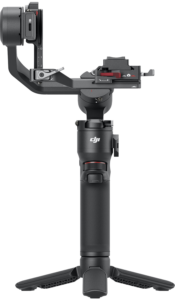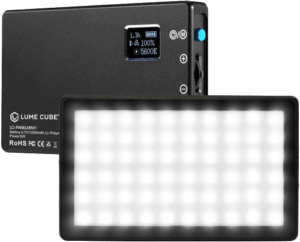If you want to start vlogging on Fujifilm kit, you’ve got an embarrassment of riches to choose from. While Fujifilm is generally more popular among photographers for its retro-styled cameras with dial-led controls, the X series offers a number of cameras that are also great for video, including multiple models that are specifically tailored to vloggers. This guide is here to help you find the right ones for you.
Fujifilm X-mount cameras all use APS-C sensors – smaller than full-frame, and significantly larger than the sensors found in smartphones. They tend to sit in the mid-range; there aren’t really any ultra-cheap beginner Fujifilm cameras, and there also aren’t any that cost as much as the top-tier flagships from the likes of Canon, Nikon or Sony. With that said, there’s plenty of variability in the series, so here we’ve nominated a range of excellent Fujifilm vlogging cameras and lenses for a range of budgets…
Best Fujifilm vlogging cameras
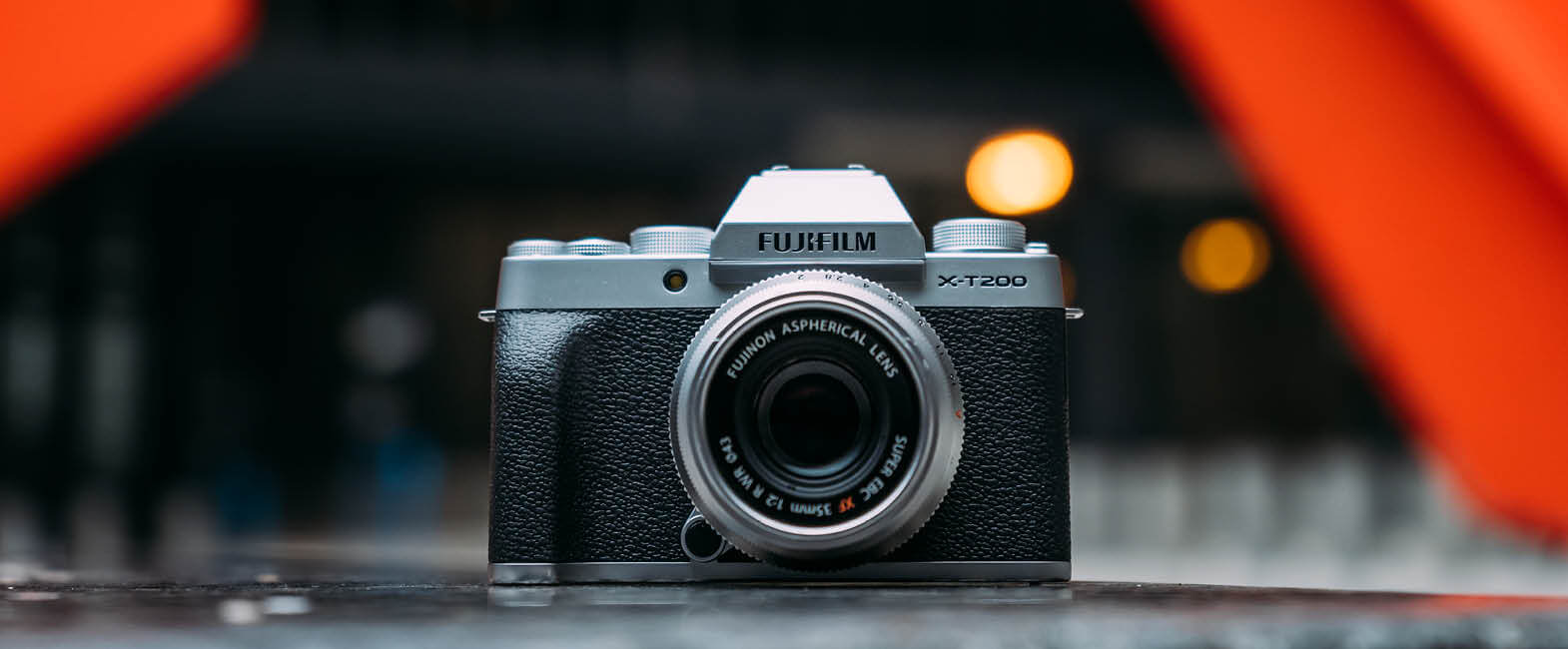
There are a fair few Fujifilm X-mount cameras, and many are tailored to quite specific purposes. For vlogging therefore, it pays to do a little research and make sure you get hold of one that’s going to give you all the features you need. Here are the Fujifilm X cameras we’d recommend for vlogging right now – including budget and second-hand options as well as the top-tier models.
Best Fujifilm vlogging camera overall: Fujifilm X-S20

Key specs:
- Mirrorless camera
- 26.1MP Fujifilm X-Trans IV APS-C sensor
- Fujifilm X lens mount
- 6.2K 30p, 4K 60p, Full HD 240p
- Ports: Micro HDMI, 3.5mm mic input, 3.5mm headphone output, USB-C
A long-awaited update that arrived in 2023, the Fujifilm X-S20 is unquestionably the best Fujifilm camera for vloggers right now. There are more affordable options available, and there are cameras with more advanced video features, but in terms of the balance it strikes between performance and price, as well as the range of video options it puts at the user’s fingertips, it’s the best you can buy.
The X-S20 has a simplified design compared to other Fujifilm cameras, with fewer of the distinctive dials that characterise the firm’s photo-focused offerings. This has helped keep the weight of the X-S20 down – at 490g, it’s not going to feel like a brick around your neck, and it’s generally a good camera for keeping out of the way. It has a fully articulating screen that flips around to the side, and a 3.5mm input for attaching a mic. All music to the vlogger’s ears.
Of course, all this was also true of the previous X-S10, which arrived in 2020. What marks the X-S20 out is its upgraded video capability. Whereas the previous camera could shoot 4K video, the X-S20 captures glorious 6.2K 30p video in 4:2:2 10-bit format, using the full, uncropped width of its sensor. There’s also the option to shoot in Fujifilm’s flat F-Log profile, and if you hook up an external recorder, the X-S20 can also output Apple ProRes RAW or Blackmagic RAW. This is an impressive suite of options for a camera at this price.
The main dial of the camera has a specific ‘Vlog’ setting, which activates a dedicated vlogging mode designed to put all the relevant key functions at the user’s fingertips. You’ll have immediate access to the stabilisation, the eye/face detection, high-speed recording, and specialist modes like ‘Product Priority’, which will make the autofocus prioritise objects held towards the camera.
Pros:
- High-end suite of video options
- Impressive stabilisation
- Improved battery life
Cons:
- Not weather sealed
Best affordable Fujifilm vlogging camera: Fujifilm X-S10
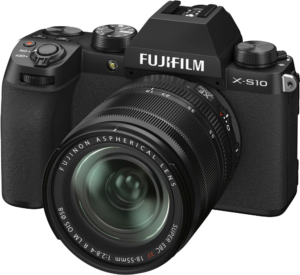
Key specs:
- Mirrorless camera
- 26.1MP Fujifilm X-Trans IV APS-C sensor
- Fujifilm X lens mount
- 4K 30p, Full HD 240p
- Ports: Micro HDMI, 3.5mm mic input, USB-C
While this is the previous generation of Fujifilm’s vlogging camera, the X-S10 is still a highly capable mirrorless option for vloggers, especially if your budget doesn’t quite stretch to the X-S20. You’ll make a good three-figure saving if you opt for the X-S10, and it can be bought as part of a vlogger’s kit with a lens, miniature tripod, SD card and shotgun microphone. No one could argue with a setup like that for a prospective vlogger.
The X-S10 was one of the first Fujifilm cameras to offer built-in stabilisation, and while it isn’t up to the standards of subsequent systems (including the one on the X-S20), it still works pretty well and will make you much more mobile as a vlogger. Video quality is as excellent as you’d expect given that this camera shares its sensor with a bunch of other premium Fujifilm X cameras. The 4K 30p footage looks great – some vloggers might wish they had 4K 60p, but that’s the kind of sacrifice you make when buying a cheaper camera that’s a few years old. We suspect a lot of vloggers will be able to get by without it.
The X-S10 lets you plug in a mic, and also offers USB-C connectivity as well as a micro HDMI port. There’s also an option to adapt a pair of headphones to the USB-C port if desired for audio monitoring. One thing to note is that the body is not weather-sealed, so you will need to be careful in wet conditions. Though bear in mind that the X-S20 isn’t either (some users were surprised Fujifilm neglected to add this upgrade in the sequel).
While the price hasn’t come down perhaps as much as you’d expect for a camera that’s three years old with an updated version also on the shelves, that’s a testament to the X-S10’s enduring popularity and how much Fujifilm got right with this design. It’s a terrific camera for vloggers (if you can live without 4K 60p).
Pros:
- Excellent video quality from X-Trans sensor
- Fully articulated screen and mic socket
- In-body stabilisation
Cons:
- No weather-sealing
- Tops out at 4K 30p
Best second-hand Fujifilm vlogging camera: Fujifilm X-T200
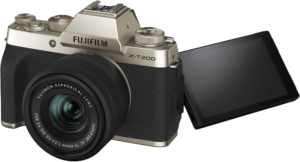
Key specs:
- Mirrorless camera
- 24MP APS-C sensor
- Fujifilm X lens mount
- 4K 30p, Full HD 120p
- Ports: Micro HDMI, 3.5mm mic input, USB-C
The Fujifilm X-T200 is an entry-level mirrorless camera. It’s now discontinued, which is a shame as Fujifilm doesn’t have many cameras down the low end of the price scale, but the good news is that you can pick it up relatively cheaply on the second-hand market, and it makes for a solid starting point for vlogging.
The first X-T100 is even cheaper, but it was something of a misfire with a few key features missing, and for a vlogger, we’d say it’s definitely worth getting this upgraded version. The X-T200 can shoot 4K 30p video (it was 4K 15p on the X-T100), it has a large 3.5-inch 16:9 rear LCD display that’s high-resolution and fully articulating, and it even offers the ability to trim video clips in-camera. The X-T200 boasts a deep grip that feels secure and comfortable in the hand, and the autofocus offers Face and Eye detection modes. All good stuff.
This entry-level series is notable for using a standard 24.2MP APS-C CMOS sensor rather than the flagship X-Trans sensors that are featured in Fujifilm’s premium cameras – though it still does an excellent job, and at low-ish resolutions like these the differences aren’t going to be too pronounced. A feature you might miss more as a vlogger is optical stabilisation, which the X-T200 doesn’t have. There is a digital ‘gyroscope’ that’s supposed to help stabilise footage, though it doesn’t really hold a candle to a proper IBIS system – and in any case, it doesn’t work in 4K.
The X-T200 is a capable vlogging camera, if slightly limited. For the second-hand prices it’s currently commanding, it represents solid value for money, and makes for an enticing gateway drug for the X series.
Pros:
- Good value for money
- Large, sharp, articulating rear screen
- Lightweight and portable
Cons:
- No optical stabilisation
- Battery life not the best (though can be topped up via USB-C)
Best Fujifilm camera for videography: Fujifilm X-H2S
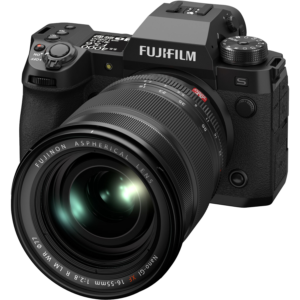
Key specs:
- Mirrorless camera
- 26MP X-Trans APS-C stacked sensor
- Fujifilm X lens mount
- 6.2K 30p, 4K 60p (120p with crop), Full HD 240p
- Ports: HDMI, 3.5 mic inputs, 3.5 headphone output, USB-C
The Fujifilm X-H2S is the manufacturer’s most advanced video camera right now – as well as, frankly, possibly the most advanced APS-C cameras ever made. Equipped with a stacked and backside-illuminated 26MP APS-C sensor, it’s a true hybrid of a camera, capable of blistering photo speeds and sublime video quality.
Let’s get the spec out of the way – the Fujifilm X-H2S can capture 6.2K video at 30p, as well as 4K and Full HD at a variety of high frame rates, and it can do it all in 4:2:2 10-bit colour. The full-size HDMI port can be used to output Apple ProRes RAW or Blackmagic RAW, and there’s the option to shoot in Fujifilm’s flat F-Log profile for up to 14 stops of dynamic range. The X-H2S also has the must-have feature of cameras from the past few years – subject-detection autofocus that can automatically recognise and lock onto specific subjects like humans and animals. What’s more, this can be used in video recording mode.
Video recording times have been a stumbling block for more than a few high-flying mirrorless cameras over the past few years – if a camera can’t go for more than 20 minutes without overheating, is it a tool fit for a professional? Fujifilm negotiates the X-H2S around this with an optional (sold separately) accessory, the FAN-001. Attaching to the back of the camera in the slot left vacant by the folded out LCD screen, the cooling fan allows you to keep recording for longer, even in high ambient temperatures. Is it a particularly sleek or stylish arrangement? No, it is not. But it works!
The Fujifilm X-H2S is one of the most expensive APS-C cameras ever made, and is probably out of budget for most vloggers. Unless you really need the features it’s offering, you don’t need to spend this much money. However, if you’re looking for the best Fujifilm video shooter money can currently buy, then here it is.
Pros:
- Superb high-resolution footage
- Can extend recording times with use of fan accessory
- Subject-detection autofocus works in video mode
Cons:
- Expensive for APS-C
Best Fujifilm vlogging lenses

Though Fujifilm’s X cameras are truly excellent pieces of kit, there’s an argument to be made that the real strength of the system is in its lenses. Fujifilm’s X-mount lens system is not the most well-populated out there, but has gained a reputation for housing a stunning range of primes and zooms for all kinds of shooters. Fuji has a particularly strong line in producing lenses that produce fantastic bokeh at shallow depths of field, with lenses full of character and expression. Here are our picks for vloggers…
Fujifilm XF 16-80mm f4 R OIS WR

This capable zoom lens is an absolute standout. If you can only buy one lens for vlogging on Fujifilm, we’d say make it the Fujifilm XF 16-80mm f4 R OIS WR. Running an equivalent focal gamut from 24mm to 120mm, it’s a versatile zoom that will do an excellent job in just about any shooting situation. The optical stabilisation is class-leading, and the sophisticated optical construction delivers premium sharpness; field curvature and aberration are exceptionally well-controlled throughout the zoom range. Focusing is fast and near-silent, and the lens is pretty reasonably priced to boot. Not sure what to buy? Start here.
Fujifilm XF 10-24mm f4 R OIS WR
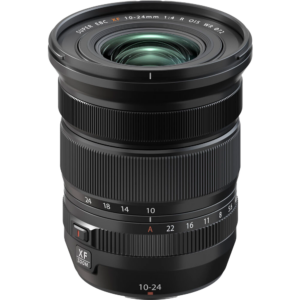
The APS-C format of the X series means that genuinely wide lenses are in short supply, so this wide-angle zoom is definitely worth considering for vloggers. Intelligently designed with a sophisticated optical construction of 14 elements in 10 groups, the Fujifilm XF 10-24mm f4 R OIS WR produces terrific image quality with great control of aberration and distortion. It’s thoroughly weather resistant with a tough outer chassis, and also has effective built-in stabilisation for run-and-gun filming.
Fujifilm XF 16-55mm f2.8 R LM WR
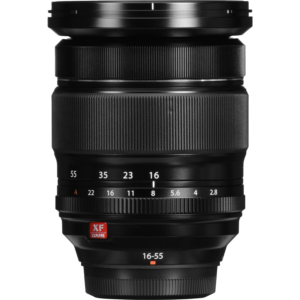
An enduringly popular lens among Fujifilm enthusiasts, the Fujifilm XF 16-55mm f2.8 R LM WR delivers a generous zoom range with a constant aperture of f/2.8 running right the way through it. This means you have real compositional flexibility even when the light gets low, and can achieve aesthetically pleasing shallow depth-of-field effects. Hardy and weatherproof, this is a solid choice of lens for travel vloggers.
Fujifilm XF 33mm f1.4 R LM WR
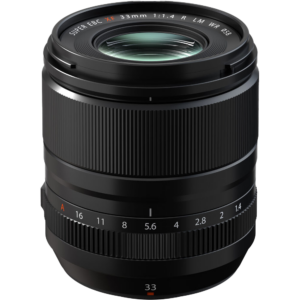
A gorgeous, well-balanced prime lens, the Fujifilm XF 33mm f1.4 R LM WR produces a field of view roughly equivalent to that of a 50mm lens mounted onto a full-frame camera, and as such, it’s great for general-purpose vlogging where you want a naturalistic perspective. It’s a cut above the kinds of cheap nifty fifties that are commonly available for most systems, both in terms of its optical quality and its f/1.4 maximum aperture that gives you a little more latitude in low light. The bokeh is, of course, gorgeous – this is Fujifilm, after all.
All the images used in this blog post are courtesy of Fuji.

